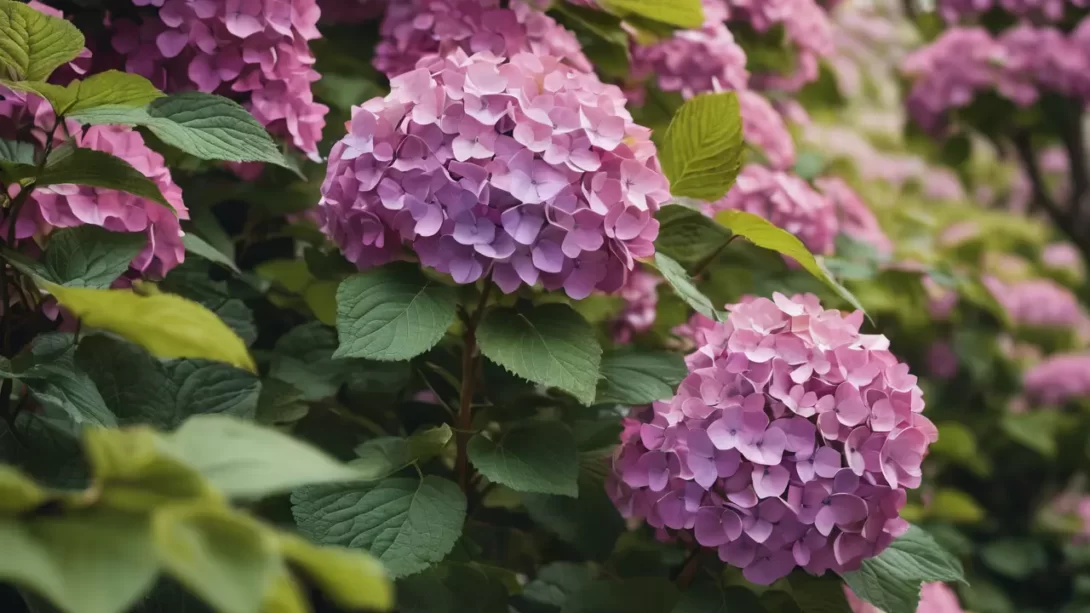Pruning a hydrangea tree is a crucial aspect of its care, directly influencing its health, shape, and the bounty of its blooms. While the task may seem daunting, especially for novice gardeners, understanding the right techniques and timing can transform it into a rewarding gardening activity. This article will guide you through the process, tailored to the unique needs of different hydrangea tree types.
Hydrangea Tree
Hydrangea trees come in various forms, each with its specific pruning requirements. The most common varieties include Hydrangea paniculata, known for its cone-shaped flower clusters, and Hydrangea arborescens, famous for its large, round flower heads. Recognizing your hydrangea type is crucial, as it dictates the pruning approach. For instance, Hydrangea paniculata blooms on new wood, meaning it can be pruned in late winter or early spring without sacrificing flower production. In contrast, Hydrangea arborescens may require a different approach, depending on your desired outcome.
Best Time to Prune
Timing is everything when it comes to pruning hydrangea trees. Generally, late winter or early spring, just before new growth starts, is the ideal time. This timing ensures that the plants have enough time to produce new growth that will bear flowers in the same year. However, if you have a variety that blooms on old wood (last year’s growth), such as some forms of Hydrangea macrophylla, pruning immediately after flowering is preferable. This prevents accidentally cutting off next year’s flower buds. Understanding the blooming pattern of your hydrangea is key to determining the best pruning time.
Tools and Preparation
Before you start pruning, ensure you have the right tools. A pair of sharp, clean pruning shears is essential for making clean cuts. For larger branches, a lopper or a pruning saw might be necessary. It’s important to sterilize your tools before use to prevent the spread of disease. A simple wipe with rubbing alcohol or a bleach solution can do the trick. Also, ensure you have gloves and protective eyewear for safety. Clearing the area around the hydrangea tree of debris and obstacles will provide you with unimpeded access during pruning.
Pruning Techniques
Pruning a hydrangea tree involves more than just cutting back branches. The goal is to shape the tree, encourage new growth, and enhance flowering. Here’s a step-by-step guide:
- Remove Dead or Damaged Wood: Start by cutting away any dead, diseased, or damaged branches. These are not productive and can harbor pests and diseases.
- Thin Out the Center: To improve air circulation and light penetration, thin out crowded branches in the center of the tree. This helps prevent fungal diseases and encourages even growth.
- Shape the Tree: Trim the outer branches to create the desired shape. Hydrangea trees typically do well with a rounded or umbrella-like shape.
- Encourage New Growth: For varieties that bloom on new wood, cutting back the branches to a set of healthy buds encourages vigorous growth and abundant flowering.
- Control Height and Spread: If necessary, reduce the height and spread of the tree by cutting back to a desired point. This is particularly useful for maintaining size in smaller gardens.
Post-Pruning Care
After pruning, it’s important to care for your hydrangea tree to ensure it recovers well and thrives. Water the tree deeply, especially if the weather is dry, to help it recover from the stress of pruning. A balanced fertilizer can be applied in early spring to promote healthy growth and flowering. Keep an eye out for signs of pests or diseases, as freshly pruned trees can be more susceptible. Regular monitoring and proper care will help your hydrangea tree flourish in the coming growing season.
Common Pruning Mistakes to Avoid
Even experienced gardeners can make mistakes when pruning hydrangea trees. One of the most common errors is over-pruning, which can stress the plant and reduce flowering. It’s generally advised not to remove more than one-third of the plant in a single season. Another mistake is pruning at the wrong time, particularly for varieties that bloom on old wood. This can result in cutting off the flower buds for the upcoming season. Avoid cutting into very old wood on some hydrangea types, as this can limit their ability to produce new shoots. Lastly, neglecting to remove only the dead or weak branches can lead to a dense, cluttered canopy, impairing the plant’s overall health and bloom potential.
Conclusion
Pruning your hydrangea tree is a vital part of its care and contributes significantly to its health, shape, and the splendor of its blooms. By understanding your hydrangea variety, choosing the right time to prune, using the correct techniques, and providing post-pruning care, you can ensure a robust and flowering hydrangea tree. Remember, each cut is an opportunity to shape the future growth of your tree, so prune with care and confidence. With these guidelines in mind, your hydrangea tree will be a vibrant and flourishing feature in your garden for many seasons to come.



